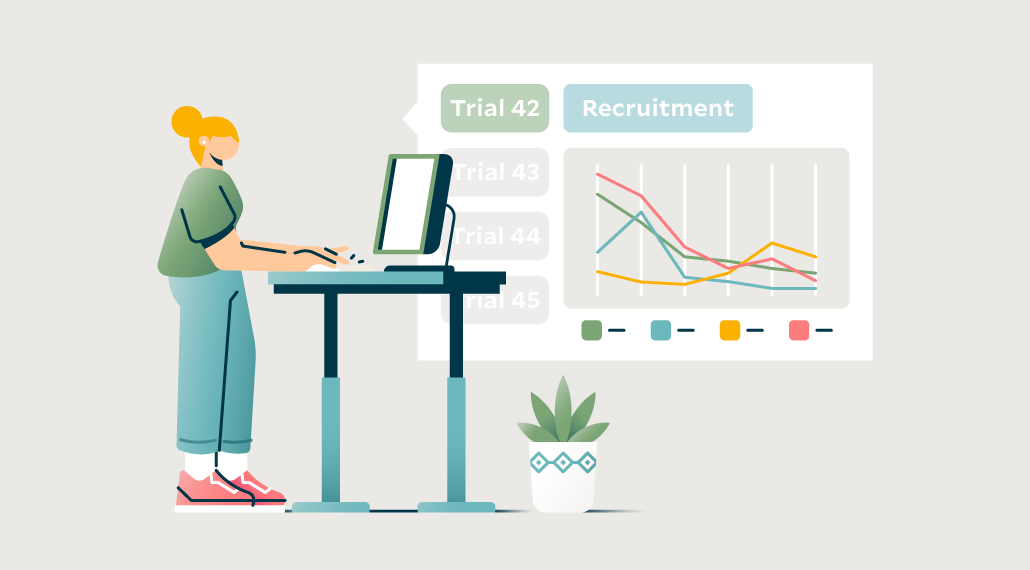March 11th, 2024
3 Ways to Design a Clinical Trial That’s Patient-Centric
By Emily Jordan, Senior Director of Sponsor Transformation at OneStudyTeam
.png)
One key challenge in clinical trials is patient access: reaching the right patients, ensuring easy access to trials, and making it easy for patients to continue participation. The industry is undergoing a shift in this regard. Historically, clinical trials were perceived to be focused on scientific outcomes over patient experience. The patients and their perspectives weren’t factored into the whole process of therapeutic development.
Then, in 2012, the FDA started working on the Patient-Focused Drug Development Initiative. Today, the FDA defines patient-focused drug development (PFDD) as “a systematic approach to help ensure that patients’ experiences, perspectives, needs, and priorities are captured and meaningfully incorporated into drug development and evaluation.” That can start when you design a clinical trial.
How do you design patient-centric clinical trials?
- Sponsors can implement digital pre-screening processes with sites to collect actionable data early.
- Sponsors provide sites with visit management tools that simplify site workflows to improve the patient visit experience.
- Sponsors provide one platform with all of these capabilities for sites to use across their trials.
As a standard, we need to build patient-centric clinical trials so we can improve patient recruitment, engagement, and retention for better outcomes. Take a closer look at how you as a trial sponsor can implement technology to support that process.
(1) Sponsors can implement digital pre-screening processes with sites to collect actionable data early.
As a sponsor, you can streamline early data collection when you provide one digital platform that connects sites and sponsors remotely. A digital platform can benefit sites by simplifying data aggregation during pre-screening processes. Instead of collecting pre-screening data in disparate systems – on paper, in Excel, etc. – sites can use a digital system to quickly and accurately enter and organize useful data.
When you can view that de-identified data on your end of the platform, you can pull actionable information while the pre-screening process is ongoing, so it’s not too late to use it.
Of course, it does matter what information sites are inputting and sponsors are able to view. You should think critically about what information will be most valuable to collect, both on an individual trial and across your portfolio. Then, during the study startup process, it’s important to set expectations around the digital pre-screening process with site teams. Introduce the platform sites will be using, and outline the data they should be capturing during pre-screening. As a starting point, diversity data, reasons declined, and I/E criteria failure information can all be valuable data points.
Suddenly, as recruitment ramps up, you’ll be able to answer critical questions such as:
- Which I/E criteria are causing the highest number of pre-screen and screen failures?
- Which I/E criteria are disproportionately affecting patients of certain races and ethnicities?
- What are patterns in reasons patients decline to participate in the trial?
- What are patterns in reasons patients of certain races and ethnicities are declining to participate in the trial?
Using this early data, you can address risks and burdens perceived by patients, as well as barriers to their enrollment, while recruitment is ongoing. That’s how you start to change the course of your recruitment and enrollment.
(2) Sponsors provide sites with visit management tools that simplify site workflows to improve the patient visit experience.
Simply put, when your clinical trial design is site-centric, it naturally becomes patient-centric. If you build technology into your trial design that provides sites with tools to communicate more effectively and complete visit tasks more efficiently, you free sites up to focus on patient care. That means sites can communicate better with patients, build stronger relationships with patients, and provide overall better care, all of which can improve patient experience and retention.
So what tools do sites need within the platforms where they’re managing patients? Consider tools and formatting such as:
- A built-in protocol-based calculator that automates a visit schedule, so every patient visit adheres to the correct visit windows per protocols. This prevents patients from experiencing cancellations due to incorrectly timed visits and decreases the risk of protocol deviations.
- Patient categorization by enrollment status to ensure no patient falls through the cracks. Sites can visualize whether potential candidates still need to be contacted, or whether patients in pre-screening need follow-up to get their first visit scheduled.
- Email reminders for patient visits, so no patient arrives without a site team member ready to work with them.
- Visibility into tasks completed by colleagues, so site staff can seamlessly jump in to work with different patients and pick up where a colleague left off. They can avoid asking the patient redundant questions, or repeating or missing steps in the care process.
- Connected calendars to prevent double-booking or incorrect booking. When site calendars are synced, someone will always be available and ready to care for incoming patients.
- Digital checklists based on protocols, so site staff can swiftly check off visit tasks to keep patients moving forward in their process.
When site workflows are improved, patients benefit.
(3) Sponsors provide one platform with all of these capabilities for sites to use across their trials.
Having one platform that enables sites to streamline workflows across multiple trials frees up time to care for patients. On a greater level, it creates more time to identify patients more efficiently for trials that match their needs. This prevents patients who have been referred to trials or who have self-identified for trials from getting stuck in a holding pattern, with no one contacting them about the next step forward in their trial search.
What cross-trial recruitment capabilities do sites need in their technology for better workflows? Consider functionalities such as:
- The ability for sites to build out a database of patients across all trials and the ability to filter and match patients to other trials that are more suited to them. This means patients who don’t qualify for one study can be considered for another study. This prevents patients from having to start over with their whole trial search process.
- Easy integration with referral partners, so patient referrals can stream directly to sites where they’re managing enrollment. This ensures site staff have instant visibility into new referrals and can contact them quickly while that patient is still interested.
- A customizable and user-friendly experience for collecting patient pre-screening information, so sites are incentivized – and eager – to use the tools that can benefit the patient experience.
- Secure communication of data with sponsors while recruitment and enrollment are happening, so sponsors gain program- or portfolio-level visibility into barriers to enrollment. When you can understand patterns in perceived burden and barriers across trials for patients and diverse subsets of patients, you can make decisions to ensure every trial is more accessible. You can invest in the recruitment sources that are driving eligible, diverse patients, so you also meet patients where they are. And you can ensure that each trial is on track to enroll a representative population on time.
Benefits of a patient-centric clinical trial design
With the right technology enabling patient-centric clinical trials, you can anticipate better patient retention and engagement, increased patient access, and faster patient recruitment. Your sites benefit because they can improve their workflows while providing better patient care. You benefit because you can identify and address barriers to enrolling diverse populations while they are appearing. And patients benefit because they can access trials faster and more efficiently, while receiving the best care from their site teams.

Related Posts

How Does a Trial Manager in Greece Improve Clinical Trial Operations with StudyTeam®?
Dimitris Tziogas, local trial manager at a biotechnology company in ...
Read More
How to Address Key Clinical Trial Challenges, According to Clinresco Centres in South Africa
There’s no single solution to overcoming a research site’s specific ...
Read More
3 Clinical Trial Billing Challenges Research Sites Solve with StudyTeam
Challenge 1: Complicated coverage analysis Challenge 2: Tedious budgeting ...
Read More
.png?width=64&name=OST%20Transparent%20(1).png)